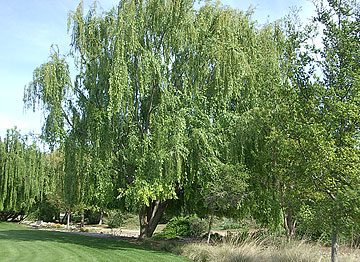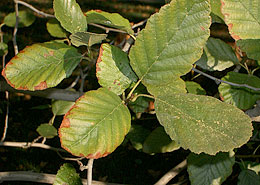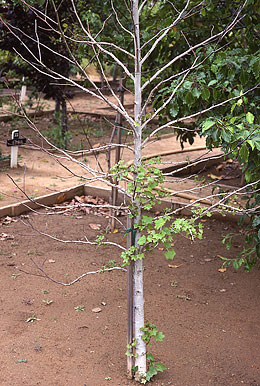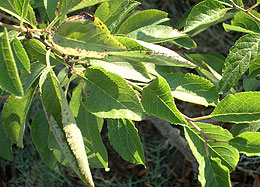- Home
- Learn about salinity
- Get to know your site
- Design a landscape
- Solve a problem
- Other information
Salinity Management Guide

Evaluating the landscape's plants
The health of a landscape's plants provides the ultimate litmus test, figuratively speaking, for determining whether the landscape can be successfully irrigated with water of a given salinity on a long-term basis.
If the landscape has yet to be planted or is slated to undergo at least some replanting, then focus on selecting species that will tolerate the amount of salinity in the irrigation water and soil. Species vary, sometimes considerably, in their ability to tolerate salinity.
With an existing landscape, it's advisable to periodically survey the landscape and look for plants that appear to be ailing. If some exist, collect and submit samples of such plants to a commercial analytical laboratory that conducts horticultural or agricultural analyses, to determine whether salinity or some other problem is the culprit.

Reviewing your field notes
Thumb through field notes and photos of the landscape's plants. Look for the following, which may indicate a problem caused by root-absorbed salts, such as occurs when irrigation water of elevated salinity is applied directly to the soil and a relatively high amount of the water's soluble salt fails to move downward beyond the roots:
- Stunted growth: This is one of the first signs that a plant is being adversely affected by salinity.
- Abnormal yellowing of the leaves of broadleaf plants and the needles of conifers, also known as chlorosis; this is another early sign.
- Dying of parts of leaves or needles, otherwise known as necrosis. This may follow chlorosis. The necrosis is most prominent on the tips and edges of older leaves and least evident on new leaves. The needles of conifers turn brown from the tip downward.
- Abnormal loss of leaves or needles — defoliation: This may follow necrosis of leaves or needles.
- Death of plant: In the severest cases, this may be the final stage in the sequence of salinity-related injury.

Also, look for the following indications of a problem caused by the exposure of leaves to salts, such as can occur when sprinkling plants with water of elevated salinity:
- Leaves of broadleaf plants may belatedly emerge in the spring, prematurely color in the autumn, and show necrosis at the edges of their leaves, possibly followed by defoliation.
- Needles of conifers may become reddish brown from the tips downward and then may turn darker brown and brittle.
- The buds, twigs, and branches of broadleaf plants and conifers may die.
- In extreme cases, the entire plant may die.
Stunted growth, partial chlorosis, and partial or total necrosis all may be signs of a plant growing in a salinity-affected soil known as a sodic soil — a soil with sufficient exchangeable sodium to adversely affect the growth of plants and the soil's structure.
Symptoms of chloride-related injury include leaves of reduced size, a slower rate of growth, chlorosis, a discoloration of leaves known as bronzing, leaves that prematurely yellow and separate from their stems, and necrosis of the tips and edges of leaves.

Symptoms of sodium-related injury include mottled leaves, chlorosis of areas in between the veins of leaves, and necrosis of the tips, edges, and areas in between the veins of leaves.
Boron-related injury is indicated by yellowing of the tips of leaves, chlorosis, small and often black spots of necrosis along the edges and within the interveinal areas of leaves, and the premature dropping of leaves.
Bear in mind that the aforementioned are not necessarily related to salinity. Such symptoms may instead be due to a deficiency of minerals, a deficit of water, or injury from herbicides, wind burn, acute air pollution, or exposure to a high degree of light. To conclusively determine whether salinity is the cause, submit samples to an appropriate horticultural or agricultural laboratory. Include samples both from ailing plants and from identical, yet healthy, plants in the same landscape.
Reviewing the laboratory report
When reading the laboratory's findings regarding the samples of plant tissue you sent to them, focus on these parameters:
- the amount of sodium in tissue, usually expressed as a percentage
- the amount of chloride in tissue, also expressed as a percentage
- the amount of boron in tissue, typically expressed in parts per million
To use the data from your samples to help assess whether it's likely your landscape has (or may eventually have) a salinity-related problem, consult the table Interpreting the results from salinity-related tests of plant tissue. The table shows the ranges of sodium and chloride that researchers consider to be low and high, respectively. It also shows a high-concentration limit for boron, above which many species of plants typically will suffer from boron toxicity.
| « Previous page | Next page » |